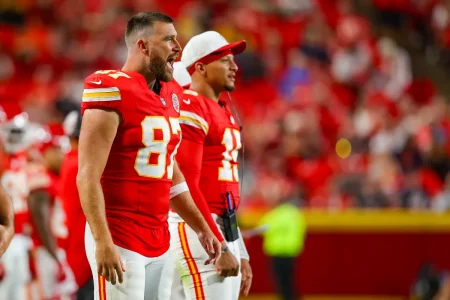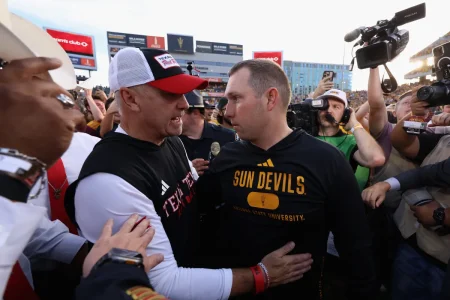The Ever-Evolving Language of Gen Z and Gen Alpha: Why Even Millennials Can’t Keep Up
If you’ve recently heard someone describe something as “6-7” or talk about “mogging” and found yourself completely lost, you’re far from alone. A new analysis of the most-searched slang terms of 2025 reveals just how rapidly language is evolving among younger generations, particularly those raised in the era of TikTok, Instagram, and other algorithm-driven social media platforms. According to research by Unscramblerer.com, which analyzed Google Trends data from January through September, Americans are frantically searching for the definitions of terms that seem to appear and spread overnight, highlighting an unprecedented linguistic generation gap that even tech-savvy millennials struggle to bridge.
Experts point to a fundamental shift in how slang now develops and spreads. “Gen Z’s slang evolves from the bottom up and is heavily shaped by social media algorithms,” explains Yaron Litwin, an expert in children’s online culture and chief marketing officer for Canopy Parental Control App. Unlike previous generations where new terminology might gain traction through mainstream media like television or radio, today’s slang emerges organically through niche online communities before rapidly spreading across platforms. This algorithmic influence creates micro-communities where terms can gain tremendous popularity within specific groups while remaining completely foreign to others—even those just a few years older. This phenomenon has accelerated the pace at which language evolves, with terms rising and falling from popularity at unprecedented speeds, making it increasingly difficult for anyone outside these specific digital ecosystems to keep up.
The most-searched slang term—with an astonishing 141,000 lookups—is “6-7,” which ironically doesn’t have any concrete definition. Originating from rapper Skrilla’s song “Doot Doot (6 7),” the phrase has come to symbolize the “brain rot” culture associated with mindless scrolling through social media feeds. It later became intertwined with basketball player LaMelo Ball, who stands 6 feet 7 inches tall, appearing in numerous edited memes. Other highly searched terms include “bop” (115,000 searches), a derogatory term for someone who frequently changes romantic partners, and “mogging” (80,000 searches), which refers to outshining others in appearance, skills, or success. These terms represent just the tip of the linguistic iceberg that has older generations scrambling for context and meaning in conversations with their younger counterparts.
The physical appearance-focused nature of many trending terms reflects the visual culture dominating social platforms. Terms like “huzz” (61,000 searches), a flirty reference to an attractive girl or group of girls, has quickly replaced earlier endearments like “boo” or “bae.” Meanwhile, “chopped” (59,000 searches) has emerged as the opposite of terms like “ate” or “served,” describing someone considered unattractive rather than someone who excelled. “Big back” (57,000 searches) refers to someone with a large upper body or who is overweight, often used teasingly, while “looksmaxxing” focuses on maximizing one’s appearance through emphasis on features like jawline, eyes, and physique. This appearance-centric vocabulary reflects the image-driven world of social media, where visual presentation and perception hold tremendous cultural currency among younger users.
Beyond physical descriptions, many trending terms relate to behaviors and interactions that are uniquely digital. “Glazing” (49,000 searches) refers to showering someone with excessive praise, while “Fanum tax” (36,000 searches)—named after an internet personality—describes playfully taking food from a friend’s plate with a sense of entitlement. “Green FN” (34,000 searches) originates from NBA 2K video games, indicating a guaranteed win or success when a perfectly timed shot turns green. Perhaps most telling about our current technological moment is “clanker” (29,000 searches), a slur aimed at robots and AI technology that, while popularized recently, actually dates back to the “Star Wars” franchise around 2005. Similarly, “slop” (21,000 searches) has emerged as a descriptor for low-quality AI-generated content flooding social media and search engines, becoming for machine-made content what “spam” is for junk email.
The geography-based slang term “Ohio” (24,000 searches) exemplifies how internet culture can transform even the most ordinary words into something completely different. For Gen Z and Gen Alpha, “Ohio” has nothing to do with the Midwestern state but instead serves as shorthand for anything weird, awkward, or absurd, evolving from the “Only in Ohio” meme trend that mockingly attributed strange events to the Buckeye State. Meanwhile, “delulu” (32,000 searches), short for “delusional,” originated in K-pop fan communities but has since gone mainstream, even appearing in rapper Doechii’s 2024 song “NISSAN ALTIMA” and being added to the Cambridge Dictionary. “Zesty” (44,000 searches) represents a positive evolution, describing someone fun and lively with good energy. These terms demonstrate how slang now transcends geographical boundaries, with influences from gaming, international pop culture, and internet subcultures all blending together in the linguistic melting pot of social media, where terms can gain global traction almost overnight before potentially disappearing just as quickly.














